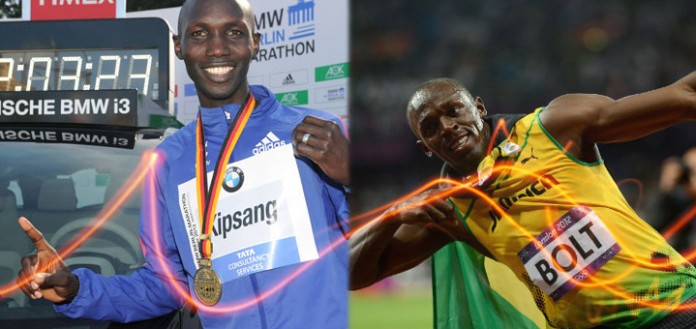Records in running progression
On September 29th, 2013 the men’s Marathon word record was broken, with Wilson Kipsang from Kenya finishing the race in 2:03:23. This is roughly a 40% improvement since 1908, when the record was 2:55:18.4 (Johnny Hayes, USA).
Similarly, all running sports have seen dramatic improvements in records. For example, the world record for 100 meters is currently 9.58 seconds (2009, Usain Bolt, Jamaica), compared to 10.6 seconds in 1912 (Donald Lippincott, USA). In women’s Marathon, the record has been brought down to 2:15:25 by Paula Radcliffe (UK, 2003) from 3:40:22 in 1926 (by Violet Piercy, UK).
Are we humans getting faster?
The bigger picture
Disappointedly, the trends are inverted when it comes to non professional athletes, and especially the youth.
In a recent report, Dr. Grant Tomkinson and his team from the University of South Australia’s School of Health Sciences, analysed 50 studies on running fitness between 1964 and 2010, involving more than 25 .000.000 kids aged between 9 and 17, in 28 countries worldwide.
Their study was based on measurements of how far kids could run in a set time, or how long it took to run a set distance. Tests typically lasted 5-15 minutes or covered a half-mile to 2 miles.
It was found, that on average, it takes children 90 seconds longer to run a mile than their counterparts, 30 years ago. Even more so, heart-related fitness has been declining at a rate of about 5% each decade, since 1975.
The results are correlated with obesity and body fat across different countries, and, not surprisingly, the study indicates that “about 30 percent to 60 percent of the declines in endurance running performance can be explained by increases in fat mass”.
Country-by-country
Surprisingly, the largest drop in children’s running performance over the years is seen for Africa, despite the hordes of professional running athletes originating from there. Today’s african children are slower by about 23%. The decline in fitness seems to be levelling off in Europe and Australia, and during the last years modestly in North America. The later being however, the second slowest continent (21% decline), according to the study.

Asia has scored 3rd, with a 17% decline; however, the numbers for China have continuously been getting worse: data from annual fitness tests (China’s education ministry) show that the country’s students are getting slower and fatter. In 2010 male college students ran 1,000 metres 14 to 15 seconds slower than those of a decade earlier. Female students’ performance was worse by about 12 seconds in running 800m.
Is an obsession with academic testing scores for China’s competitive college admissions to blame? Many experts believe so, especially when it is combined with the increasing popularity of indoor alternatives, such as video gaming and web surfing. On the other hand, Japan has never seen a falloff in fitness. It should be noted that 20 million out of the 25 million children in the studies originated from Asia.
Dr. Tomkinson said, and we can only agree, that children need to be more inspired and encouraged to do more vigorous exercise. If the current trends continue, the public health consequences could be dire.


